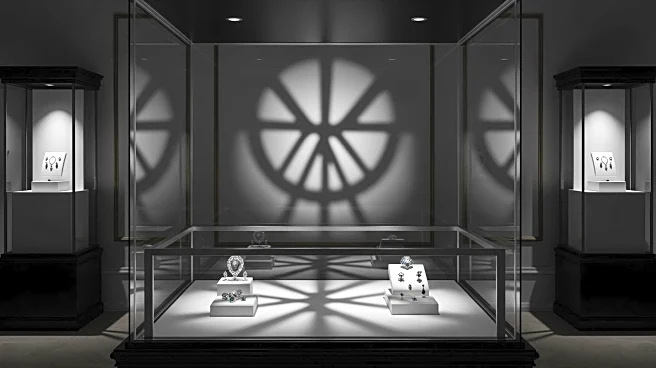What's Happening?
A seven-minute raid at the Louvre Museum resulted in the theft of nine priceless items from the Galerie d’Apollon, which houses France's crown jewels. The stolen items include a necklace and earrings gifted by Napoleon to Empress Marie-Louise, and pieces
from the collections of Queen Marie-Amélie and Empress Eugénie. The theft has been compared to the 1911 Mona Lisa heist, highlighting its significance. French President Emmanuel Macron condemned the robbery as an attack on cherished heritage.
Why It's Important?
The theft represents a major cultural and historical loss, as the stolen jewels are integral to France's national identity and history. The incident underscores the importance of museum security and the challenges in protecting valuable artifacts. The potential dismantling and sale of these jewels could result in the permanent loss of historical artifacts, affecting cultural heritage and historical research. The theft may prompt international discussions on improving security measures for cultural institutions.
What's Next?
Efforts to recover the stolen items and apprehend the thieves are expected to intensify. The incident may lead to increased security measures at museums globally, as institutions seek to prevent similar thefts. Collaboration between law enforcement and cultural organizations will be crucial in tracking the stolen jewels and preventing their sale on the black market.
Beyond the Headlines
The theft raises ethical concerns about the protection of cultural heritage and the responsibilities of institutions in safeguarding historical artifacts. It also highlights the ongoing challenges faced by museums in balancing public access with security needs.















